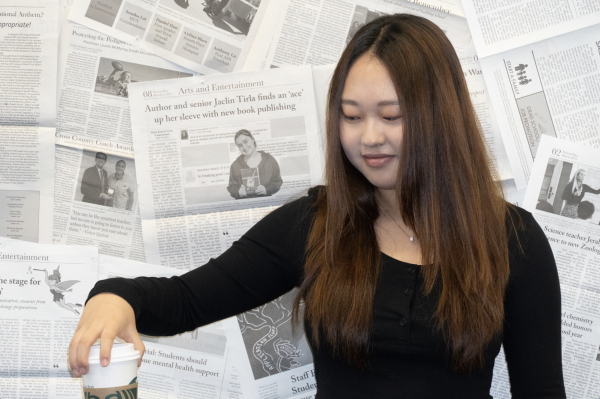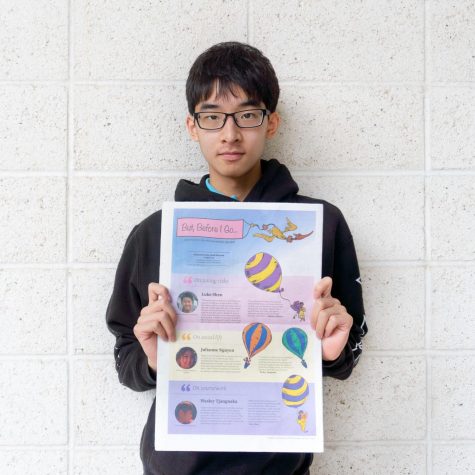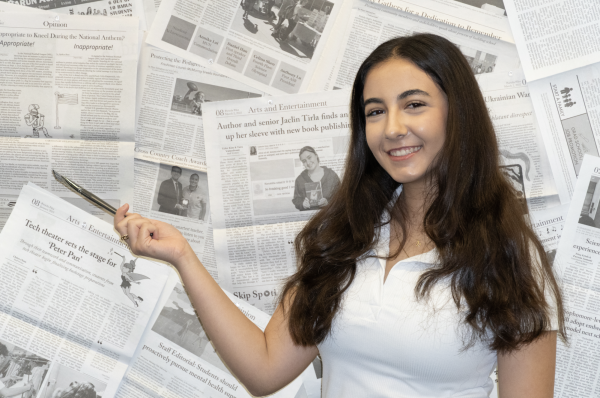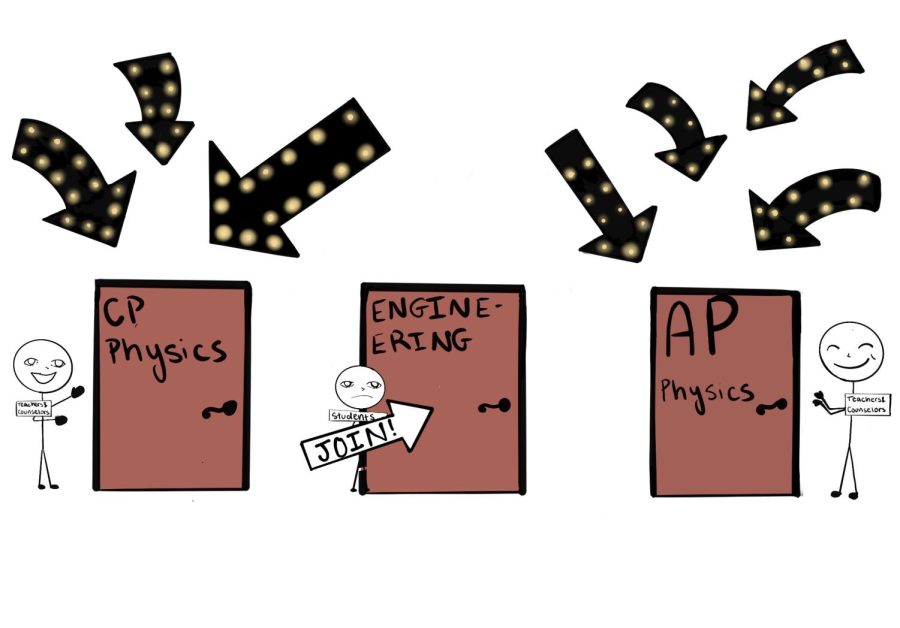‘Hidden’ Classes: How Can Engineering Courses Be Better Promoted During Course Selection?
For students who feel that AP Physics 1 is too daunting or that CP Physics wouldn’t be the best fit for their interests or abilities, Principles of Engineering can offer an alternative that involves a survey of the applications of physics. However, the focus is placed on fostering interest in engineering rather than making the course an intermediate course in physics, according to physics and engineering teacher Anthony Pham — a possible reason that it has gone under the radar for many students entering their junior year.
At Portola High, the two physics courses offered to juniors – CP Physics and AP Physics 1 – cover the required subject in vastly different ways. From the amount of coursework to the number of concepts covered, the differences between CP and AP Physics have left some students wondering about the potential for another course to bridge the gap between the two polarizing levels of difficulty.
Portola High’s new Principles of Engineering course, a beginning-level engineering class that was first offered this school year, is not a direct substitute for a mid-level physics course. But, as another option for students who wish to apply physics concepts and earn the physics credit required for graduation, it must be properly introduced to sophomores during course selection in the spring. With efforts by the counseling department and teachers to promote the course already in place, the task of spreading the word now falls on students themselves.
The course itself covers concepts from kinematics to rotational motion and applies them to practical engineering projects. It can be a viable alternative or supplement to taking CP or AP Physics and can complete a student’s graduation requirement for two semesters of physics, according to physics and engineering teacher Anthony Pham.
“During junior year, students have the freedom to take more than one science course, which was not possible before junior year,” Pham said. “I would say that the engineering classes are more tailored for students who are interested in engineering than for those who want something that’s more challenging than CP.”
Though the completion of Math II and familiarity with computer-assisted design (CAD) software are prerequisites for the Principles of Engineering course, the level of math is not as high as the Math III skills needed for success in AP Physics. At the same time, the application of mathematics in a physical environment offers students more opportunities to extend past only conceptual topics, such as those covered by CP Physics.
According to junior Miles Barr, who is currently taking CP Physics, he was unaware that Honors Principles of Engineering was a possible alternative to the CP course for fulfilling both his physics requirement and his desire for challenge.
“I think that it would be good for students to be given more opportunity, more choices when they’re signing up for their classes and also think that [Portola High] should go more in-depth explaining the differences between the courses you can choose and what you’re doing in them,” Barr said.
Similarly, many current sophomores expressed that they were unaware of their options for junior-year science courses. Upon hearing about the course for the first time, sophomore Shriya Janolkar expressed surprise that the Honors Principles of Engineering course may be a better fit than CP or AP Physics for her. Janolkar said she wished that teachers had informed students more about future course options, so that they have more courses to consider when the time for course selections comes.
“It’d be great if [teachers] advertised it more or showed students that there was actually an engineering class because I was completely unaware of it,” Janolkar said. “I don’t know what the syllabus is between the two, but if they are similar, I might actually consider taking the honors engineering course.”
A new way for courses to gain visibility among students is emerging. To better convey information about course selections for the 2022–23 school year to students, the counseling department has created a series of videos with teachers introducing and pitching a variety of courses, including Principles of Engineering. All that remains to be done is to simply promote the videos among students, according to counselor Ryan Itchon.
“What’s cool about interviewing the teachers themselves is that they can really speak to the nuances of each class and also the technology requirements you need to be successful,” Itchon said. “So, hopefully, it makes our Bulldog families a lot more informed about their choices instead of just reading the course description.”
To further increase visibility, an in-class slides presentation one week prior to sophomore spring conferences will help promote the Principles of Engineering course and the science electives at Portola High, according to Honors Chemistry teacher Michael Tang. Once again, the responsibility for spreading that information lies with students.
“In the past, we’ve just talked about AP Physics and CP Physics being the physics options,” Tang said. “This year, we haven’t put the presentation together yet, but I believe we will have that conversation soon about whether or not to advertise for engineering. We most likely will, because we know Mr. Pham has been working really hard at developing those courses. It’s a great resource for our school.”
Ultimately, the goal of sophomore course selection for junior year, a time in which students can take a variety of science courses for the first time, is to match students to their interests while still meeting graduation requirements. Through actions as simple as sharing links to course description videos with those who might be interested or telling sophomores of their options besides CP and AP Physics, students can become part of that effort and prevent alternative courses from being obscured by more mainstream options.
Your donation will support the student journalists of Portola High School. Your contribution will allow us to purchase equipment and cover our annual website hosting costs.

Kayleen Kim is the managing editor for her third and final year on the Portola Pilot. This year, she'll aim to make her final interactions with the team...

Justin Tang is the Portola Pilot’s Back Page Editor for the 2021-22 school year, his second and last on the team. Throughout the year, he’ll make sure...

Shaina Taebi is the Backpage Editor for her third year in the Portola Pilot. For her final year she is excited to spend class time drawing more editorial...




